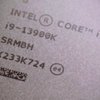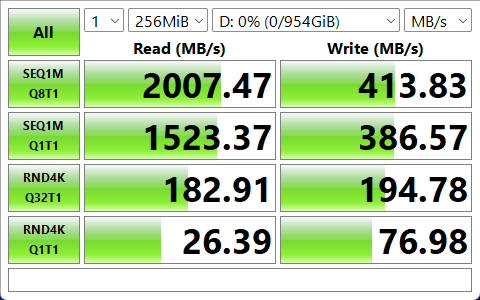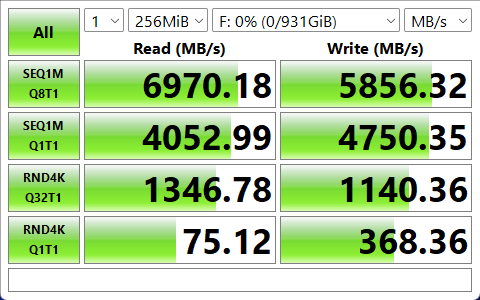Performance - Platform - Storage USB 3.2 Gen2 and NVMe M.2
USB 3.1 / 3.2 performance
You are looking at a USB 3.2 Gen2x2 flash drive tested with the current motherboard.
| SuperSpeed USB | Speed in Gbps | Also Named | Also called |
|---|---|---|---|
| USB 3.2 Gen 1 | 5 | SuperSpeed USB | USB 3.1 Gen 1, USB 3.0 |
| USB 3.2 Gen 2 / Gen 2x1 | 10 | SuperSpeed+ USB 10 Gbps | USB 3.1 Gen 2 |
| USB 3.2 Gen 2x2 | 20 | SuperSpeed+ USB 20 Gbps | - |
| USB 3.1 Gen 1 | 5 | SuperSpeed USB | USB 3.2 Gen 1, USB 3.0 |
| USB 3.1 Gen 2 | 10 | SuperSpeed+ USB 10 Gbps | USB 3.2 Gen 2 |
| USB 3.0 | 5 | SuperSpeed USB | USB 3.1 Gen 1, USB 3.2 Gen 1 |
It is one of the fastest external storage units now available on the market, and its transfer rate of makes USB 2.0's transfer rate of 25-30 MB/sec appear insignificant in contrast. That is the very highest performance that the USB stick is capable of.
- USB 3.2 Gen 1: originally known as USB 3.0, and previously renamed to USB 3.1 Gen 1. It’s the original USB 3.0 specification and can transfer data at up to 5Gbps.
- USB 3.2 Gen 2: Previously known as USB 3.1, then later as USB 3.1 Gen 2. It offers speeds of up to 10Gbps.
- USB 3.2 Gen 2x2: formally known as USB 3.2, it’s the newest and fastest spec, promising speeds at up to 20Gbps (by using two lanes of 10Gbps at once).
We test with a USB 3.2 Gen2x2 (20 Gbps) Flash drive.
USB 3.2 Gen2x2 (20 Gbps) did kick in correctly for the tested device we threw at it.
NVMe M.2 SSD Performance
CrystalDiskMark is a disk benchmark utility that measures performance for any storage device's sequential and random reads/writes of various sizes. It is useful for comparing the speed of both portable and local storage devices. CrystalDiskMark can measure sequential reads/writes speed, measure random 512 KB, 4 KB, 4 KB (Queue Depth = 32) reads/writes speed, has support for different types of test data (Random, 0 Fill, 1 Fill), includes basic theme support and has multilingual support. Give it a try yourself as it is free to download. The SSD is showing some very decent results back at us. Just compare read/write performance of the other drives shown.
Above: We have a lot of Gen 4 SSD, most of them with heatsink applied.



